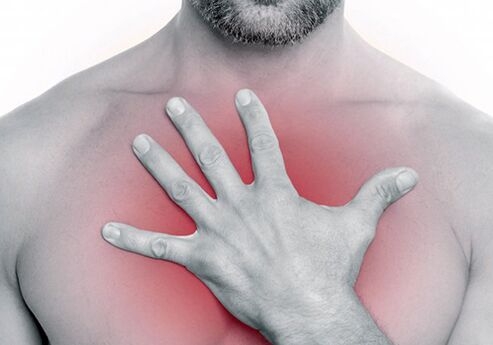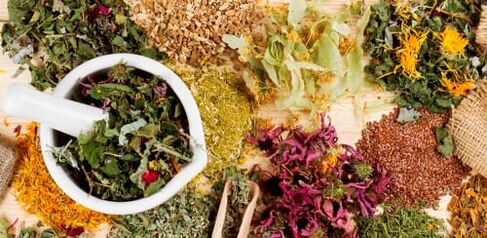
Degenerative and dystrophic changes in the vertebral and intervertebral disc tissues and the clinical symptoms associated with these processes are known as osteochondrosis.Let's consider the main causes and treatments for thoracic osteochondrosis.
Causes of thoracic osteochondrosis
- genetics.
Damaged or mutated genes responsible for normal bone growth are inherited.Therefore, the risk of developing osteochondrosis is significantly increased if someone in your family has this disease. - Sedentary lifestyle.
In this case, chronic and excessive loading on the spine is important, leading to stress on the vertebrae and the development of the disease.This condition is more common among people who work with computers and drivers. - Vascular pathology.
Any vascular disease that supplies blood to the spine and results in an insufficient supply of nutrients to the vertebral tissue can lead to degenerative and dystrophic changes in the vertebral tissue. - Metabolic disorders in the body.
Most commonly, diabetes causes changes in blood vessels that disrupt tissue nutrition.In addition, direct changes in vertebral tissue may also occur in the case of disorders of phosphate-calcium metabolism, thyroid and parathyroid pathologies, and adrenocortical diseases. - Infection and poisoning.
Inflammatory processes in the vertebral and intervertebral disc tissues caused by the action of viruses, bacteria or their toxins may also contribute to the development of osteochondrosis. - overweight.
Persistent excessive loading on the spine can lead to compression of the intervertebral discs and subsequent development of osteochondrosis. - Malnutrition.
Lack of trace elements (e.g. calcium), vitamin (D3) can also lead to disruption of metabolic processes in the body and the development of pathology in bone and cartilage tissues. - Age-related changes in bone and cartilage tissue.
As we age, degenerative changes occur in the thoracic spine, causing compression of the intervertebral discs.In old age, the muscular framework of the spine also weakens. - Thoracic spine injury.
It is not uncommon for vertebral arches to suffer bruising and fractures due to falls or self-inflicted injuries.At the same time, anatomical changes in the vertebrae and surrounding tissues are the direct cause of the development of the pathological process, which is the cause of osteochondrosis. - scoliosis
"School" pathology occurs in children in educational institutions where health technology is not used, mainly in the thoracic spine.Curvature of the spine significantly changes the load on each segment of the spine, leading to the development of osteochondrosis. - Sports and occupational hazards.
Sports stress (e.g. weightlifters) as well as work related to weightlifting, frequent changes in body position (turning, flexion and extension, jerking movements) can also lead to persistent pathological changes in the spine.In addition, maintaining uncomfortable postures for a long time when standing, sitting, lying, lifting, carrying heavy objects, or performing other tasks will increase the pressure on the intervertebral discs and the load on the entire spine, and may also lead to osteochondrosis. - Other causative factors and risks for developing thoracic osteochondrosis.
Excessive strain on the spine associated with foot conditions, as well as due to wearing uncomfortable shoes, high heels and pregnancy in women, sudden cessation of regular training by professional athletes and finally nerve tension and stress situations.
Symptoms of thoracic osteochondrosis
All symptoms of the disease can be divided into reflex symptoms and compressive symptoms.
reflex symptoms
The mechanism by which they appear is stimulation of receptors in the intervertebral ligaments, intervertebral joint capsules, and intervertebral discs.Radiation (diffusion) of irritation to adjacent segments of the spinal cord can cause a variety of symptoms.
Mainly include: chest pain, pain in the abdomen or heart area, chest muscle tension, and vegetative symptoms of internal organs.The pain is always severe and patients describe it as the pain of a dagger strike.The pain occurs in the area between the shoulder blades, and the pain can radiate to the heart area and sternum.
Patients may even have difficulty moving or taking deep breaths.Reflex symptoms are more common than compression symptoms in thoracic osteochondrosis.
symptoms of oppression
The compression symptoms of thoracic osteochondrosis are caused by compression or stretching of the nerve roots exiting the intervertebral foraminal area.The main symptoms are: symmetrical muscle weakness in the legs, loss of sensation, and "radicular" pain in the back and chest.The pain is "shooting" and is felt in the chest and abdomen, and intensifies with movement, bending the body, coughing, sneezing, and laughing.A "crawling", numb, and tingling sensation occurs.As the pathology progresses, movement disorders and muscle atrophy may occur.Muscle tone increases, lower limb sensitivity decreases, and urination disorders may occur.
Other autonomic symptoms of thoracic osteochondrosis
Autonomic symptoms occur in osteochondrosis because nerve fibers from the thoracic spine contain autonomic conductors; irritation or damage to these fibers may be accompanied by autonomic symptoms.Mainly: peeling and dryness of the skin in areas innervated by pressure, localized sweating and disturbance of thermoregulation (also according to the area innervated), brittle toenails, pain simulating gastrointestinal pathology (gastritis, gastric ulcer, cholecystitis), waist pain, heart pain.
Treatment of thoracic osteochondrosis
Treatment of thoracic osteochondrosis should be comprehensive (a combination of pharmacological and non-pharmacological approaches), individual and systemic.
Drug treatment of thoracic osteochondrosis
The main purpose of these methods is to eliminate pain, muscle tension, improve microcirculation and tissue nutrition.For this purpose, NSAIDs are used to reduce inflammation, eliminate pain and muscle tension.The average maturity of these funds is 7-14 days.Local anesthetic is prescribed.Analgesic mixtures may be used when nonsteroidal analgesics are not effective enough.Administer the mixture intravenously using saline or dextrose.Paravertebral blocks provide rapid analgesia when the analgesic is injected into the soft tissue of the perivertebral region.
To relieve the pain of thoracic osteochondrosis, stimulating and distracting ointments can be applied topically.
Muscle tension can be relieved with medications such as muscle relaxants.
To normalize blood circulation and improve tissue nutrition, antiplatelet drugs and niacin are used.
They also use medications called chondroprotectants that improve disc and joint metabolism.
non-pharmacological treatment
Diet for thoracic osteochondrosis.Completely exclude from the diet: salt, spicy spices, vinegar and salt preparations, semi-finished products, sugar (can be replaced with honey), coffee and carbonated drinks.Allowed: Beans, eggplant, cheese, dairy products, lettuce, cabbage, cottage cheese, bananas, liver, carrots, melons, seafood, cereals, fresh vegetables and fruits, herbs, seeds and berries.
A comprehensive treatment plan for thoracic osteochondrosis includes: manual therapy, classic massage, acupressure, reflex segmental massage, physical therapy, twisting techniques (stretching), acupuncture, swimming, physical therapy methods (electrophoresis, ultrasound, amplitude pulses, natural dynamic flow, mud therapy, etc.).
Traditional methods of treating thoracic osteochondrosis

Exacerbation of osteochondrosis of the thoracic spine is an indication for treatment under strict medical supervision.Do not blindly use home and folk remedies without your doctor's approval.The following may be used as additional treatments to relieve a patient's condition:
- Tinctures and decoctions.
- Bilberry leaf tincture.Take 1 tablespoon of lingonberry leaves, pour 0.25 liters of boiling water, and brew for 2 hours.Drink half a cup in the morning and evening for 3 weeks.
- Decoction of parsley root.Grate 50 g of parsley root, add 0.5 liter of water and simmer for an hour and a half.Take 1 tablespoon morning and night for 3 weeks.
- Tincture of nettle and honey.Juice freshly picked nettles and mix equal parts honey and medicinal alcohol.Leave in a cold place for 14 days and take one tablespoon on an empty stomach in the morning for 2 weeks.
- Yarrow tincture, containing peppermint, licorice and calendula.Mix one tablespoon of yarrow with 2 tablespoons of mint, licorice and calendula, pour 1 liter of boiling water and brew for 7-8 hours.Take 50 ml 3 times daily for 3 weeks.
- wipe.
- Radish and honey with vodka.Grate the radish, mix with an equal amount of honey and add 50 ml of vodka.Use the composition to rub the painful area.
- Lard and hops.Mix a tablespoon of melted lard with an equal amount of hops and cool to room temperature.Rub the resulting composition onto the affected area.
- Lard and propolis.Melt 150 grams of lard, add 30 grams of propolis, and mix thoroughly.It is best to rub the skin at night.After surgery, you should wrap your back with a warm cloth.
- Ginger and garlic.Add the butter and sauté the chopped ginger and garlic until a smooth paste forms.Rub the resulting mixture onto the painful area.
- Oregano oil.Mix 1 tablespoon oregano and 0.2 liters of olive oil.Leave the mixture for 10 hours, then strain and apply to the painful areas of your back.
Prognosis of thoracic osteochondrosis
The prognosis is usually good, and complications of this disease are rare.It is worth noting the prompt diagnosis of the disease, the exclusion of other pathologies of the chest organs, as well as thorough treatment and adequate prevention of the progression of osteochondrosis.

























